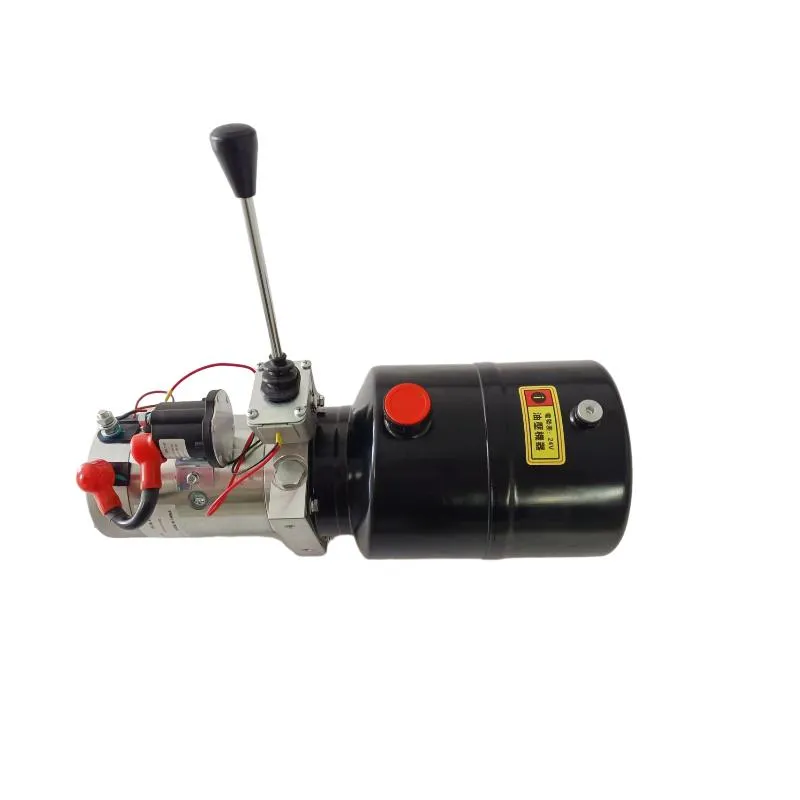دېكابىر . 14, 2024 09:27 Back to list
Understanding Force Generation in Hydraulic Cylinder Systems for Optimal Performance
Understanding Force in Hydraulic Cylinder Products
Hydraulic cylinders are crucial components in various applications, from industrial machinery to automotive systems. Their primary function is to convert hydraulic energy into mechanical force, enabling machinery to perform specific tasks. Understanding how force is generated in hydraulic cylinders is essential for engineers, operators, and anyone involved in the design or use of hydraulic machinery.
The Basics of Hydraulic Force
At its core, hydraulic systems operate on Pascal's principle, which states that pressure applied to a confined fluid is transmitted undiminished throughout the fluid in all directions. In hydraulic cylinders, this principle allows a relatively small force applied over a small area to be translated into a much larger force over a larger area.
The force exerted by a hydraulic cylinder can be calculated using the formula
\[ F = P \times A \]
where - F is the force (in pounds or Newtons), - P is the pressure applied in the hydraulic system (in psi or Pascals), - A is the cross-sectional area of the cylinder (in square inches or square meters).
This equation clearly shows that increasing either the pressure or the area can result in a significant increase in force output. For example, if the hydraulic pressure in a system is 2000 psi and the cylinder's area is 5 square inches, the force generated is
\[ F = 2000 \, \text{psi} \times 5 \, \text{in}^2 = 10,000 \, \text{lbs} \]
Types of Force in Hydraulic Cylinders
Hydraulic cylinders come in various types, each designed for specific applications
. The two most common types are single-acting and double-acting cylinders.force in hydraulic cylinder products

1. Single-Acting Cylinders In these cylinders, the hydraulic fluid pushes the piston in one direction, while a spring or gravitational force returns it to its original position. They are typically used in applications where the load is only required to move in one direction, such as lifting a load or pressing.
2. Double-Acting Cylinders These cylinders have hydraulic fluid acting on both sides of the piston, allowing for movement in both directions. They provide greater efficiency in operations that require back-and-forth motion, such as in industrial presses or excavators.
Factors Influencing Force Output
Several factors can influence the force output of hydraulic cylinders
- Fluid viscosity The type and temperature of the hydraulic fluid can affect the flow rate and, consequently, the pressure within the system. Higher viscosity fluids can decrease efficiency and the speed of operation.
- Seal integrity Leaks due to worn or damaged seals can diminish pressure within the hydraulic system, leading to reduced force output. Regular maintenance and inspection of seals are vital to ensure optimal performance.
- Cylinder design Factors such as cylinder length, diameter, and materials used will also affect the efficiency and force generation capabilities of hydraulic cylinders. Proper design tailored to the intended load and application is crucial.
- Pressure settings Hydraulic systems often have adjustable pressure settings. Understanding the limits of a hydraulic cylinder and adjusting these settings accordingly can significantly impact the force generated during operation.
Conclusion
Understanding the force generated in hydraulic cylinder products is fundamental for anyone working with hydraulic systems. By grasping the underlying principles and factors that influence performance, operators and engineers can ensure the efficient and safe operation of hydraulic machinery. Proper selection, maintenance, and operation of hydraulic cylinders not only enhance productivity but also increase the lifespan and reliability of the equipment used across various industries. Whether you're in construction, manufacturing, or automotive sectors, optimizing hydraulic force can lead to more efficient operations and lower costs.
-
1.5 Ton Turbocharged Cylinder 80/95-40/60-35-124 | High Performance
NewsAug.22,2025
-
High-Performance Fork Lift Hydraulic Power Units
NewsAug.21,2025
-
High-Quality Set of 50/60-45-290 471 - Precision Parts
NewsAug.19,2025
-
1.5 Ton Lifting Cylinder-Hebei Shenghan|Heavy-Duty Lifting, Precision Engineering
NewsAug.18,2025
-
1.5 Ton Lifting Cylinder-Hebei Shenghan|Precision Hydraulic Solutions&Industrial Lifting
NewsAug.18,2025
-
1.5 Ton Lifting Cylinder 70/82-40-290-535 - Hebei Shenghan Hydraulic Machinery Co., Ltd.
NewsAug.18,2025
